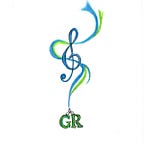How to become an excellent sight-reader
by Grace Joy Reid
When sight-reading a new piece of music, there are several questions to ask yourself. Here are a few to help you in improving your sight-reading skills through analysis.
Analyze the piece before playing. Ask yourself:
1. What is the tonal center?
2. What are the beginning and ending notes? What primary chords are used? Label those chords in pencil on your music score.
3. Look at the Key Signature. What key is it in? Figure it out without playing the notes. Does the song modulate to other keys? If so, label those key changes.
4. Look at the Time Signature. Does the meter change anywhere in the piece?
5. Tap out the rhythms in the right hand, the left hand, then hands together.
6. What motives (the smallest musical idea) are repeated? Where are they repeated?
7. What is the structure or form of the piece? Is it ABA, or 12-bar blues, or something else?
8. What are the dynamics?
9. How does the title fit in with the mood of the song? How will I interpret this song? With a gentle touch? Or with a grand sound? Or somewhere in between? Does it use rubato?
10. Are there expression markings? How will I interpret those?
Once you’ve figured that out, then play the song through, once only. Do this with a new song once a day, and your sight-reading will improve. Your analysis will usually take up to 5 minutes, depending on the length of the song. I would start with short, once page pieces, at least one or two levels below your current level.
Don’t perfect the song. Just practice analyzing the music, then play it, then you’re done!
Do this every day, and you will become an excellent sight-reader.
